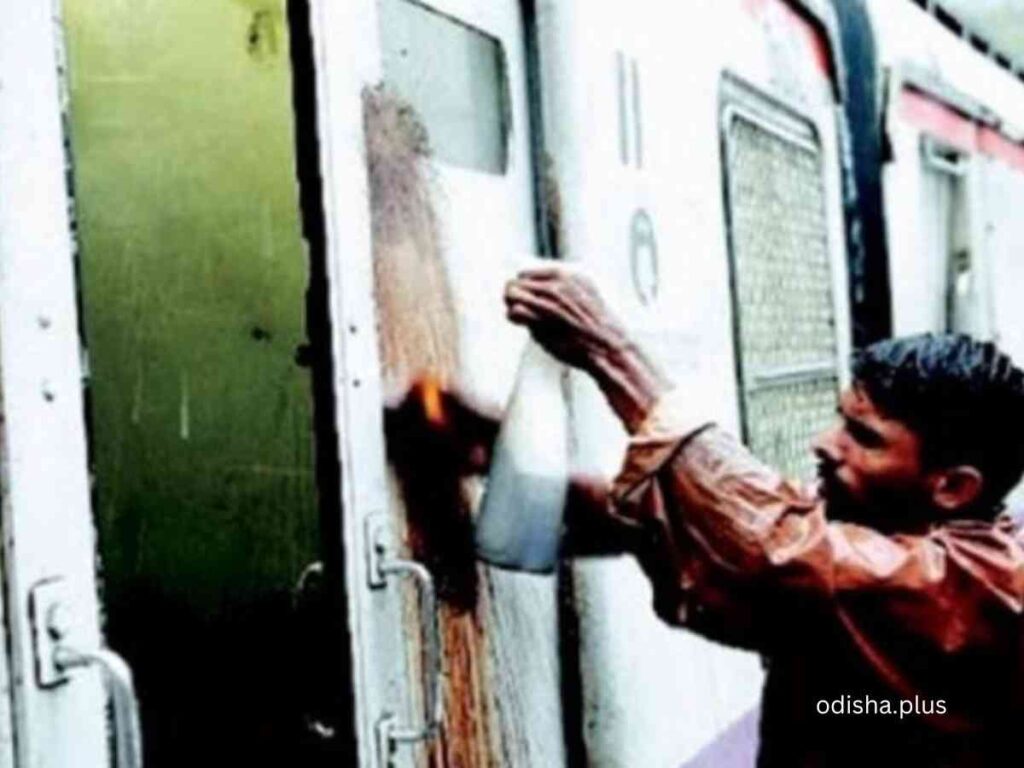Why are we so dirty & careless about cleanliness in public places?
Mrinal Chatterjee

A recent report says, Indian Railways spends ₹12,000 crore annually just to clean gutkha stains an amount that almost equals the annual budget for ISRO (Indian Space Research Organization) for the 2024-2025 fiscal year (Rs 13,042 crore); and almost thrice the annual budget for AIIMS (All India Institute of Medical Sciences), New Delhi. If this information of the colossus amount of money required to clean gutkha stains – does not jolt you, nothing ever will.
It is not just money that is wasted.
Kolkata’s landmark Howrah Bridge was in danger because of gutkha stains on its pillars. The authorities had to erect protective flexi glass covers just to protect the pillars from gutkha stain corrosion.

Why are we so dirty, and so careless about cleanliness in public places? Most of our public toilets are non-usable, water-taps are non-functional. Most of our drains are clogged with rubbish and plastic, which lead to water logging. Our nalahs have turned to open drains, which carry tons of raw sewage to the rivers, many of which are considered ‘holy’. Barring a few exceptions, even our holy places are dirty and we don’t care.
From Gandhiji to Modiji – our leaders have been asking us to be clean and keep clean. But we don’t seem to listen or care.
I agree there are problems – dense population, inadequate infrastructure, poor waste management system, limited waste segregation and recycling facilities and scores of other reasons. But what explains Rs 12, 000 crore gutkha stain?
November, the month of gentle transition
The name ‘November’ comes from the Latin word ‘Novem’, which means ‘nine’. In the Roman calendar, November was the 9th month of the year.
November in India is a gentle transition, a pause between the rains and winter’s chill. Across the country, this month brings a quiet magic, as though the earth itself is taking a deep breath. The weather begins to mellow, with northern India cooling down as the heat softens into something milder and more bearable, while the southern states enjoy a refreshing calm after the monsoon’s retreat. There’s an almost palpable shift in the air, a sense of winding down that nudges us into reflection.
In the north, November sets the stage for misty mornings that blanket cities and villages alike. In places like Delhi and Amritsar, a faint haze might drift over the fields, wrapping them in a sleepy calm, while people savor the season’s first sips of hot tea on their terraces. Half of Ladakh of course is covered in snow. In the south of the Vindhyas, the post-monsoon landscape appears fresh, lush and vibrant, giving a much-needed respite from the relentless humidity. The countryside bursts with green and the rivers, recently swollen with rain, now meander peacefully under sunny skies.
November is also a month of light and celebration. Deepawali often falls in late October or early November and its warmth lingers in the days that follow. Many parts of India continue the festivities with smaller, local celebrations or harvest festivals. The air is laced with a sweet scent of sugarcane and fresh sweets.
In Dhenkanal, where I live and which is located right at the centre of Odisha, we were experiencing weather closer to summer till late October. Cyclone Dana brought in some rain. Hopefully winter will follow.
Bhupen Hazarika
On 5 November, it will be 13 years since Bhupen Hazarika, one of India’s most iconic musicians, singers, poets and filmmakers left us. Known as the ‘Bard of the Brahmaputra,’ he used music as a powerful medium to convey social messages and connect people across linguistic and cultural boundaries. His life’s work reflected the rich heritage of Assam, his birthplace and resonated deeply with the socio-political landscape of India and beyond.
Born on 8 Sept, 1926 in Sadiya, Assam, Hazarika displayed prodigious talent from a young age. By 12, he had written and performed his first song and later, he pursued his higher studies in the United States, earning a Ph.D. from Columbia University, where he also crossed paths with icons like Paul Robeson. Robeson’s influence was profound; Hazarika adapted Robeson’s famous song ‘Ol’ Man River’ into ‘Bistirno Parore,’ which became an anthem of resilience and hope.
Hazarika’s music blended Assamese folk traditions with modern influences, exploring themes of social justice, unity and compassion. His songs, like ‘Manuhe Manuhor Babe’ (‘Humans for Humanity’) and ‘Ganga Amar Ma’ (‘Ganga My Mother’), exemplified his philosophy of empathy and egalitarianism. As a poet and composer, he elevated folk tunes with lyrics that critiqued societal divides and addressed universal concerns, from rural struggles to environmental issues.
Beyond music, Hazarika made significant contributions to Assamese cinema, directing award-winning films that portrayed the region’s vibrant cultural landscape. He won the National Award for the best film maker for Shakuntala (1960), Pratidhwani (1964) and Loti Ghoti (1967). He also won the National Award for best music composition in 1977 for ‘Chameli Memsaab’. His work earned him accolades such as the Dadasaheb Phalke Award, Padma Bhushan; Padma Vibhushan and Bharat Ratna, India’s highest civilian award, posthumously.
He wrote more than 15 books of short stories, essays, poems, travelogues and children’s rhymes. He also published a transcript autobiography titled ‘Moi Eti Jajabor’. He also edited the popular monthlies ‘Amar Pratinidhi’ and ‘Pratidhwani’ for over two decades.
Dana Jokes
As the impact of cyclone Dana, which hit Odisha coast on October 25 early morning was less than expected and spared Puri, Bhubaneswar, the capital city – lot of jokes got circulated on social media, especially on local television channels who were predicting just short of apocalypse.
Here are two: Dana was expected to be a villain, it turned out to be a junior artist.
There was more wind on TV news than the cyclone.
(The author is Regional Director Indian Institute of Mass Communication, IIMC Dhenkanal. Views expressed are personal.)



























